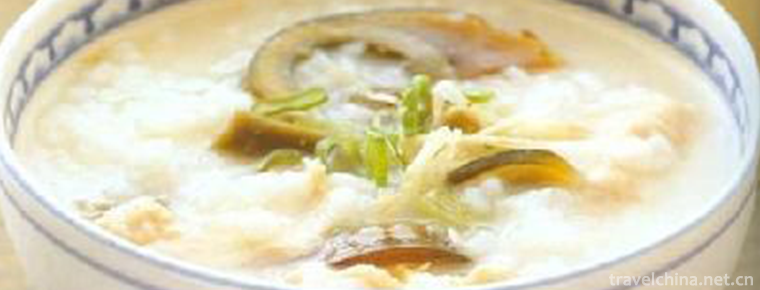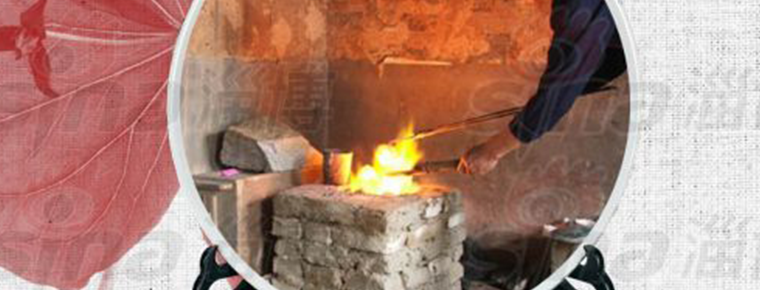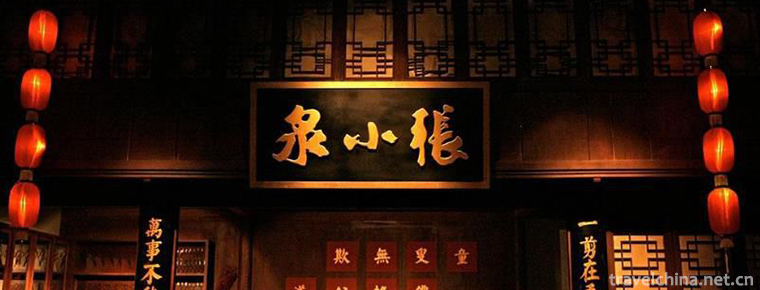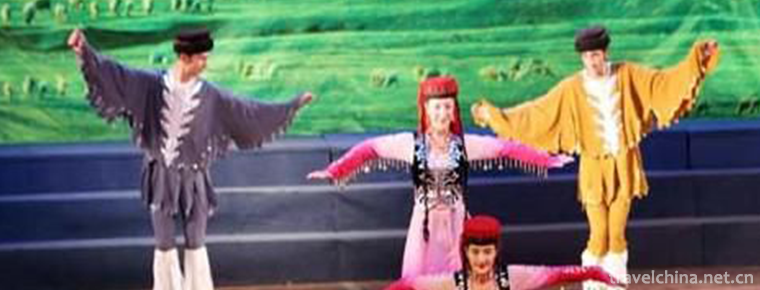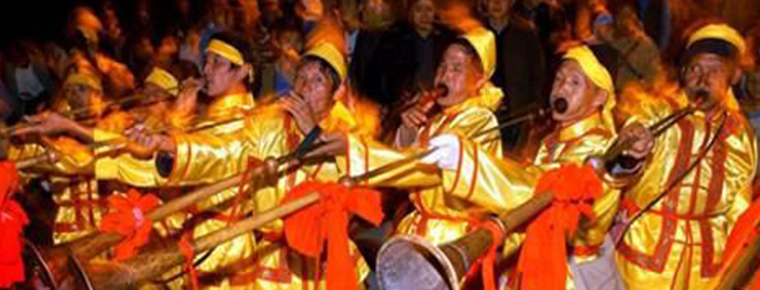Narati Scenic Spot
Narati Scenic Spot
Narati Tourist Scenic Area, located in Xinyuan County, Xinjiang, is located in the hinterland of Tianshan Mountains, the eastern end of the Ili Valley, with a total planning area of 960 square kilometers. From south to north, the scenic spot consists of alpine grassland sightseeing area, Kazakh folk custom area and tourist living area.
Narati Scenic Area is the leading tourist attraction in Ili Prefecture. It is one of the famous scenic spots in Xinjiang. It has famous scenic spots such as summer pasture, Kizilaxia Falls and Wangtian Cave. April 13, 2018, was included in "Magic Northwest 100 Scenes".
On December 29, 2018, it was named the Sixth Batch of demonstration zones (units) for national unity and progress by the National People's Committee.
Historical evolution
It was named National AAA Scenic Spot in 2001.
In early 2004, it was named as an autonomous region-level scenic spot.
In April 2005, Narati Grassland was awarded "the most populous grassland in Kazakhstan" by the Guinness World Headquarters in Shanghai.
In June 2005, the scenic spot passed the certification of ISO 9001 international quality system, ISO 14001 environmental management system and OSHMS 18001 occupational safety and health management system.
October 2005 was rated as one of the six most beautiful grasslands in China.
In January 2011, it was awarded National AAAAA Scenic Spot by the National Tourism Administration.
In April 2015, it was awarded the national eco-tourism demonstration zone.
April 13, 2018, was included in "Magic Northwest 100 Scenes".
geographical environment
Location context
Narati Scenic Spot is located in the hinterland of Tianshan Mountains, at the eastern end of the Ili Valley. Located between 85 degrees 17-28 east longitude and 43 degrees 01-15 North latitude, the total planned area is 960 square kilometers.
climate
Narati tourist attraction is a continental semi-arid climate, with an average altitude of 1800 meters, annual rainfall of about 880 millimeters, and annual average temperature of about 20 degrees Celsius.
natural resources
plant resources
Narati grassland is one of the four largest grasslands in the world. It is a subalpine meadow plant area with abundant vegetation and lush hilly meadow of Iris slender-stem group. Other associated species mainly include Perilla, Gentiana pseudogentiana, Carex, Agropyron crispus, Festuca arundinacea, Strawberry and Thyme. There are also Quercus aspergillus, belonging to the family Equisetae of Pteridoptera cuneata.
Animal resources
There are many kinds of animals in Narati Scenic Spot, such as snow chicken, pheasant (pheasant), otter, deer, lynx, fox, ferret, egret, red falcon, northern goat, snow leopard, wolf, golden eagle, woolly foot baleen, etc.
Main attractions
Summer pasture
Narati grassland is a grassland of Zhongshan area developed on the Paleo-diluvial stratum of the Third Period. It is connected with Narathian Ridge in the southeast, and is like a barrier. The Valley in the upper reaches of the Gongnais River in the northwest is broken down. The terrain is inclined in a large area, the mountains and springs are densely distributed, and the streams are vertical and horizontal. The deep gully at the foot of the edge of the mountain, the staggered rivers, the dense forests, the slow undulation of the wilderness, the pine tower along the gully pillar, as well as the carpet house dots, the movement of livestock clouds, is an important summer pasture in the Gongnais grassland.
Kizilaxia Falls
Kizilaxia Falls is located more than 10 miles east of Narati Tourist Area. The Duku Highway is winding through deep mountains and valleys. The waterfall is over ten meters high and several meters wide. Many trickles from the top of the mountain converge in the places of Qifeng, Xiaosong, weeds and fresh moss, pouring down.
Wang Tian cave
Wangtian Cave is located 4 kilometers north of Narati Tourist Spot. It is exposed in the cliff of Qifeng. Its entrance is tens of meters away from the ground. The stone leading to it from the foot of the mountain is like a ladder, suspended in mid-air. There is a rectangular boulder in the entrance of the cave.
Historical culture
During Genghis Han's Western Expedition, a Mongolian army marched from the depths of the Tianshan Mountains to Yili. It was spring, and the hungry and cold army crossed the mountains and saw the grasslands. At this time, clouds and sunrise, sunset as blood, people can not help shouting: "Narathi! Naratti!" (quasi-hormonal archaic, meaning a place with the sun, and later referred to as "the place where the sun first came to see"), Narathi got its name from this.
Nalati, translated as Nalat in the Qing Dynasty, was explained in Comrade Wenzhi of the Western Regions: "Nalatdaba, Uygur language: when the sun shines, the snow Chongshan is deep and the sun shines, hence the name." Narrat is the sun.
Honors
On December 29, 2018, it was named the Sixth Batch of demonstration zones (units) for national unity and progress by the National People's Committee.
Cultural Activity
Mountain Flower Festival
In 2014, Narati held the Mountain Flower Festival for 8 days. There were 17 kinds of activities, including cross-country vehicle challenger, Kazakh folk competition (drinking horse milk, wrestling, polo, horse racing, catching sheep, girl chasing, etc.), Narati Scenic Area Motorcycle cross-country race, air grassland festival, Kazakh-Kazakh Food Exhibition on the tip of tongue, Kazakh folk fire party (with a view to) Kazakh people's bride-themed bonfire evening, the first ring Narati bicycle rally race in Xinjiang, dreaming back to childhood-ten thousand parent-child interaction race, dreaming back to the Han and Tang Dynasties-Princess Wusun's reception ceremony, the rock night of ten thousand people in Narati grassland, "accompany you to see the grassland" hiking competition, Narati photography exhibition, Narati scenic spot hand-held mobile phone photography contest, Narati scenic spot Meiwen Collection contest and so on.
Akan Aytes Cultural Tourism Festival
On July 24, 2014, the 60th anniversary of the founding of Ili Kazakh Autonomous Prefecture and the fifth Akan Aytes Cultural Tourism Festival of the prefecture were opened for three days. The cultural tourism festival will focus on Akan's duet singing. Meanwhile, it will hold food culture, felt house culture, milk tea culture, horseback culture exhibition and exhibition of goats, girls'pursuit, wrestling, abga, speed horse racing, horse racing and other performances as well as handicraft exhibitions.
Tourist guide
Opening Hours
8:30-20:00
Admission ticket
Peak season (June 1-September 30): 75.00 yuan (excluding interval buses) off season (April 1-May 31, October 1-November 30): 60.00 yuan (excluding interval buses) special travel season (December 1-March 31): 22.5 yuan (excluding interval buses)
Special food
Baked whole sheep, mutton baked cake, camel milk, butter tea, horse sausage, boiled wheat kernels, etc.






-
Sliced Fish in Hot Chili Oil
Boiled fish, also known as river boiled boiled fish and boiled fish fillet, was first popular in Cui Yun Township, Yubei District, Chongqing..
Views: 248 Time 2018-10-27 -
Eight treasures porridge
Babao porridge is a dish of Manchu and Han Dynasty. It tastes sweet and delicious and enjoys a high reputation..
Views: 222 Time 2019-03-26 -
Smelting Technology of Gold Chute Stone fill Stove
The smelting technique of gold chute rockfill stove was first seen in the history of Song Dynasty. Since the fourth year of Jingde in the Song Dynasty, Minister Pan.
Views: 252 Time 2019-05-04 -
Scissors Forging Technology
Zhang Xiaoquan scissors forging technology, local traditional handicraft in Hangzhou, Zhejiang Province, one of the national intangible cultural heritage..
Views: 131 Time 2019-05-05 -
PuXian opera
Puxian Opera is one of the oldest operas in China. It originated in Tang Dynasty, became in Song Dynasty and flourished in Ming and Qing Dynasty. It is known as the "living fossil" of Southe.
Views: 116 Time 2019-06-09 -
Tajik Eagle Dance
Tajik Eagle Dance, a folk traditional dance in Tashkurgan Tajik Autonomous County of Xinjiang Uygur Autonomous Region, is one of the national intangible cultural heritage..
Views: 236 Time 2019-06-17 -
Gelao Maolong Festival
"Gelao Maolong" is a form of folk worship handed down from generation to generation by Shiqiao Gelao people. It mainly spreads in the Ming and Longfeng villages of Longjing and Tangshan town.
Views: 134 Time 2019-07-13 -
Yongxiu Yaya Opera
Yongxiu Ya Opera originated in Wu Town, one of the four famous towns in Jiangxi Province. It was born in the late Ming Dynasty and Ganbei Bench Opera. Because all of its female characters were played .
Views: 193 Time 2019-07-14 -
Shenhai well
Zigong Shenhai well is located at the foot of ruanjiaba mountain in Da'an District, covering an area of 3 mu, with an altitude of 341.4 meters. The well was excavated in the third year of Daoguang in Qing Dynasty (1823 A.D.) and completed in the 15th year of Daoguang (1835 A.D.), which lasted 13 years.
Views: 142 Time 2020-10-15 -
Panzhihua before Sui Dynasty
Archaeological discoveries have proved that Panzhihua is one of the areas where human activities took place earlier. In addition to the "Yuanmou Man" and "Butterfly Man" relics found in nearby areas, the huilongdong ancient human site about 18000-12000 years ago has been found in Panzhihua City..
Views: 114 Time 2020-12-14 -
Ecological environment of Luzhou
On July 5, 2019, the Ministry of ecology and environment of the people's Republic of China announced the special investigation of black and odorous water bodies in the first stage of overall planning and strengthening supervision in 2019. Luzhou was listed in the "list of cities whose.
Views: 348 Time 2020-12-14


